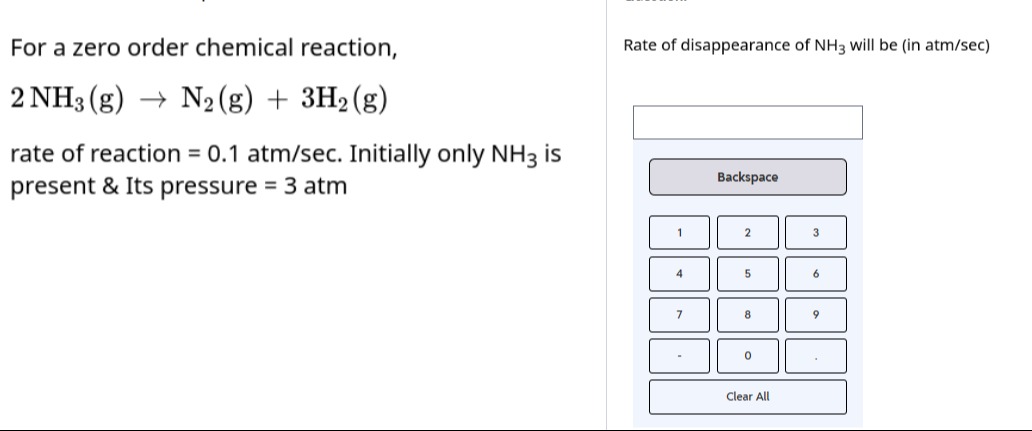Question
Question: For a zero order chemical reaction, $2NH_3(g) \rightarrow N_2(g) + 3H_2(g)$ rate of reaction = 0.1...
For a zero order chemical reaction,
2NH3(g)→N2(g)+3H2(g)
rate of reaction = 0.1 atm/sec. Initially only NH3 is present & Its pressure = 3 atm
Rate of disappearance of NH3 will be (in atm/sec)

0.2
Solution
The rate of a chemical reaction is related to the rate of disappearance of reactants and the rate of appearance of products by their stoichiometric coefficients. For the given reaction: 2NH3(g)→N2(g)+3H2(g)
The general expression for the rate of reaction is: Rate =−21dtd[NH3]=+11dtd[N2]=+31dtd[H2]
We are given the rate of reaction = 0.1 atm/sec. We need to find the rate of disappearance of NH3, which is −dtd[NH3].
From the rate expression, we can equate the overall rate of reaction to the term involving NH3: Rate =−21dtd[NH3]
Substitute the given value for the rate of reaction: 0.1 atm/sec=−21dtd[NH3]
Now, solve for −dtd[NH3]: −dtd[NH3]=2×0.1 atm/sec −dtd[NH3]=0.2 atm/sec
The information about the reaction being zero order and the initial pressure of NH3 (3 atm) is not required for this calculation, as the overall rate of reaction is directly provided. For a zero-order reaction, the rate is constant and independent of reactant concentrations, but here the constant rate itself is given.
